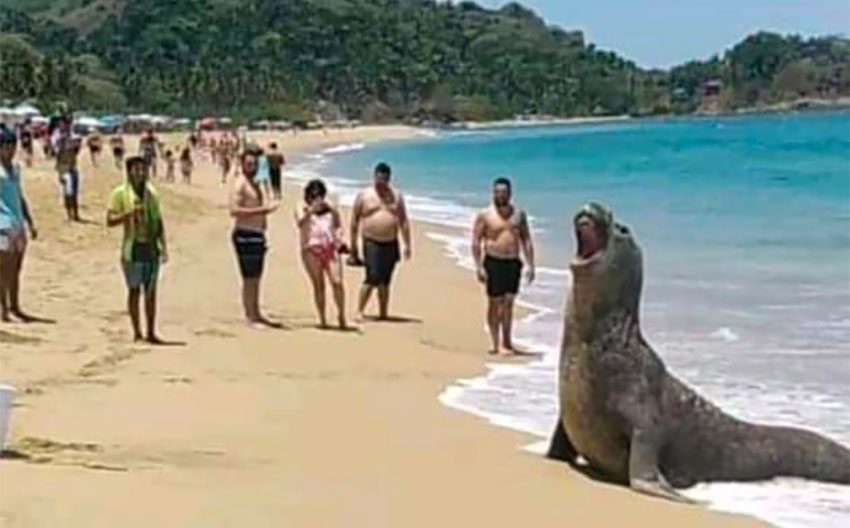An elephant seal peacefully stranded on a beach in Nayarit for the past week has been enchanting visitors and locals and raising questions by environmental officials about its extraordinary appearance so far from home.
It is not yet certain what subspecies of elephant seal it is that suddenly appeared on the shores of San Pancho Beach on July 5. No one has got close enough to the animal — named “Panchito” by delighted locals — to take a blood sample and risk being bitten, nor have experts been willing to risk its health by moving it.
However, whichever subspecies Panchito is, sea elephants are cold water animals, and its closest natural habitat to Nayarit would be the northern part of the Baja peninsula.
Authorities have cordoned off Panchito’s location to protect the animal, and marine experts continue to observe without further interference for now. They estimate it weighs between 200 and 300 kilos.
The seal has been seen entering the ocean multiple times and then returning to the beach, and environmental officials say that, at the moment, Panchito appears to be in good health and merely resting.
#Pancho o #Panchito, el Elefante Marino del sur en Playa San Pancho #Nayarit, se echa un chapuzón en el mar y después regresa a la arena a descansar. pic.twitter.com/9KkzwNBx2m
— Ernesto Méndez (@ernesto_mendez) July 10, 2020
“It could be that he returns to the sea and leaves [for good], or his state of health could take a turn for the worse, and that’s when we would intervene,” said Roberto Moncada, a marine biologist at the Bahía de Banderas Technological Institute.
Despite the hands-off approach, Panchito has been a popular attraction since arriving, making a splash on social media.
Elephant seals, are carnivorous mammals and there are two types — northern and southern. Northern elephant seals, scientifically known as Mirounga angustirostris, normally live in an area stretching from the Gulf of Alaska to the northern Baja peninsula.
However, southern elephant seals, or Mirounga leonina, come from much farther away in the southern Atlantic, off the coast of Argentina. Some colonies of southern elephant seals exist as far south as Tasmania and New Zealand.
While elephant seals are known to take long journeys in search of food, if Panchito turns out to be a southern elephant seal, a journey this far from home would be extremely unusual.
“If it is indeed [a southern one], this animal is far, far away from its habitat,” said Moncada. “Its arriving here would be a record.”

